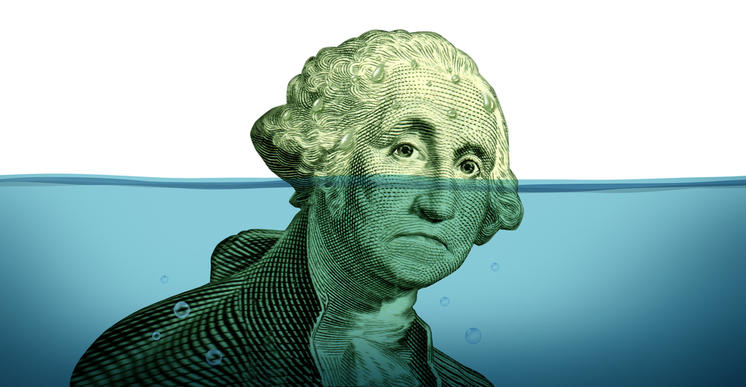Weekly Thoughts by Mirabaud Securities - 06 December 2019



Dec. 15 is a deadline of sorts for negotiators, as 15 percent tariffs on about $160 billion worth of Chinese exports to the U.S. are scheduled to go into effect. Delaying or discarding the tariffs could give (or not) a new impulse to the market. As a reminder the U.S. has already placed tariffs on more than $350 billion of Chinese goods amid the more-than- 17-month-long trade war. Over the week, the main American indices ended up sharply. The same positive trend for European indices with an average increase of nearly 1.5% despite talks about the Brexit outcome. In Asia, most of the indices were fueled by hope that the Hong Kong turmoil will end and that trade talks between Washington and Beijing will resume shortly.

Over the week, the euro and Japanese yen largely held gains made against the dollar this week after disappointing manufacturing data and signs of new fronts in U.S. President Donald Trump’s trade war rattled greenback investors. Might that be a new trend for 2020? At the G10 level, all the members finished the week positively against the dollar (the New Zealand dollar was the best performer). At the emerging market level most of the members' currencies (against the dollar) experienced increases over the week with a significant overperformance for the Chilean peso. Only the South Korean won and the Thai baht managed to finish in red.

In the study of economic fluctuations, many industries have been found to lead or lag the overall business cycle. When an industry (or some of its products) consistently leads the economy’s business cycle, a leading indicator or barometer can be developed from measures of that industry’s activity. The indicator can be used to assess turning points in the economy’s business cycle. These turning points are the business cycle peaks and troughs that the National Bureau of Economic Research (NBER) uses to identify the economy’s recessions and expansions or downturns and upturns. Activity in the chemical industry has been found to lead that in the overall economy. This paper provides an overview of a Chemical Activity Barometer (CAB) that is a leading indicator which can be used to anticipate the peaks and troughs in the US economy’s business cycle. After a terrible year (German third-largest industry sector, is projected to decrease by 5 percent annually to 193 billion euros in 2019), the German chemical industry association (VCI) is now expecting a "slight increase" in production of 0.5 percent, driven by growth in the pharmaceutical business. Should we now bet on the German economy recovery?

The future of Germany’s ruling coalition looked shaky after the election of new leaders of the Social Democrats (SPD) who are demanding a shift in policies, and several senior conservatives on Sunday ruled out talks to renegotiate a governing agreement. Two strong leftist critics of the coalition with Chancellor Angela Merkel’s conservatives - Norbert Walter-Borjans and Saskia Esken - won a vote for leadership of the Social Democrats on Saturday, possibly putting the country, Europe’s largest economy, at a political crossroads. Their ascendancy raises the chances of an early election or a minority government if the SPD leaves the coalition, which could trigger political instability at a time when the far-right Alternative for Germany (AfD) has become the country’s third-largest party. Walter-Borjans and Esken, who ran on a joint ticket, want to renegotiate the coalition deal to focus more on social justice, investment and climate policies, setting them on collision with Chancellor Angela Merkel’s Christian Democrats (CDU).

Adverse weather conditions in many regions and the ease of ordering via mobile devices contributed to record-setting U.S. digital sales for the 2019 Thanksgiving weekend. According to Adobe Analytics, consumers spent $7.4 billion online, an increase of $1.2 billion over Black Friday 2018, making it the biggest Black Friday ever for digital sales. Average order value — at $168 — was up nearly 6 percent year-over-year and also set a new Black Friday record. However, online revenues were slightly under Adobe’s $7.5 billion prediction for the day. Smartphone sales on Black Friday, at $2.9 billion, were the largest ever for mobile shopping and were up 21 percent over last year. Sixty-one percent of all traffic came from mobile devices, and 39 percent of all ecommerce sales were made on a smartphone. Based on Adobe Analytics data, a record $9.4 billion was spent online by the end of Cyber Monday, an increase of 19.7 percent from 2018. It was the largest online shopping day of all time in the U.S., easily surpassing last year’s $7.9 billion. After 10 p.m. on Cyber Monday proved to be a popular time to shop, generating almost 30 percent of total revenue. Mobile transactions soared, with $3.1 billion — 33 percent — of total online sales coming from smartphones. That is 46 percent more than in 2018. Despite concerns about a recession and a trade war, consumers continued to show confidence in the economy and did not let these issues affect their holiday purchasing.
Several hot topics were discussed this week, including:
November report / A German government / The 60/40 is back / The chemical sector sends us a new message / The circular economy has a bright future
Please feel free to ask for more information if interested.
* On the cliff
SWOT stands for Strengths, Weaknesses, Opportunities and Threats, the French equivalent of FFOM analysis (Forces, Faiblesses, Opportunités et Menaces). While SWOT analysis can be used to develop a company's marketing strategy and evaluate the success of a project (by studying data sets such as company's strengths and weaknesses, but also competition or potential markets), I decided several years ago to adapt it as a way to analyse financial markets. SWOT analysis allows a general development of markets by crossing two types of data: internal and external. The internal information taken into account will be the strengths and weaknesses of the market. The external data will focus on threats and opportunities in the vicinity. Finally, and most interestingly, there is a table that will evolve according to current events, which will allow it to reflect the underlying trend in the financial markets on a weekly basis.
Zögern Sie nicht, sich an Ihren persönlichen Ansprechpartner bei Mirabaud zu wenden oder kontaktieren Sie uns hier, falls dieses Thema für Sie von Interesse ist. Gemeinsam mit unseren Fachspezialisten evaluieren wir gerne Ihre persönlichen Bedürfnisse und besprechen mit Ihnen mögliche, auf Ihre Situation zugeschnittene Anlagelösungen.
Author
Weiter zu